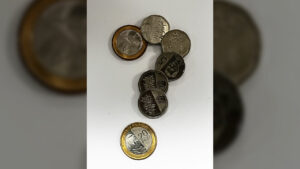What’s the most important economic reform that President Ferdinand “Bongbong” Marcos, Jr. can do at this stage?
Is it to amend the restrictive economic provisions in the Constitution? Is it to increase taxes and reduce our budget deficit? Is it to increase government spending on infrastructure and health?
No, the most important economic reform that the government can do is to reverse the strong peso and undervalue the currency.
Weakening the peso relative to the dollar and other foreign currencies will stimulate exports, protect local industries from dumping of cheap Chinese and other imported goods, increase the incomes of Overseas Filipino Worker (OFW) families, and make the Philippines more attractive to foreign investments.
Our balance of trade is worsening. Our imports have far exceeded our exports and ballooned to $52 billion in 2024. Imports, especially from China, keep increasing while exports have been declining. This means that we must finance our trade deficits through debt or remittances, as well as service exports from BPOs.
A weak or undervalued peso will be beneficial to agriculture and our farmers because agriculture has a high domestic value added. It will stimulate agricultural exports, which will raise the income of our farmers and protect them from cheap agricultural imports more effectively than quantitative restrictions.
Instead of imposing quantitative restrictions and other import quotas, which foster corruption and inefficiency, the government should abolish them and use the weak peso to protect local farmers. The weak peso will promote import-substitution and stimulate exports. For example, we can increase agricultural exports to Japan, whose farmers are ageing (Japan imported rice for the first time) but only if we have a weak peso to improve competitiveness and generate more revenue.
A weak peso will be good for the tourism and mining industries, two possible growth drivers that can replace our BPO industry, which is facing technological and geopolitical headwinds. A weak peso can make staying in the Philippines cheaper for foreign tourists and generate more income for the local tourism industry.
A weak peso will also act as an economic stimulus because OFW families will receive more pesos for their dollar remittances and will use them to drive up consumption spending.
A weak peso will also shield us from cheap Chinese goods which are being dumped in the Philippines and elsewhere due to the demand slump in the Chinese domestic market and the trade war with the US. As I mentioned in an earlier column, even Philippine retailers are being stressed by the influx of cheap Chinese goods entering the market through Chinese-owned e-commerce sites such as Lazada, Shopee, Temu, and TikTok.
Won’t a weak peso spur inflation? The Bangko Sentral ng Pilipinas’ studies show that the pass-through rate of a depreciated currency to inflation is small.
While improving infrastructure is good and opening the economy to foreigners may be better, a weak peso is the strongest incentive for foreign investors to invest in the Philippines. It will make our local resources cheap in peso terms, especially our labor. It will make our exports competitive in the world market, thereby justifying the establishment of factories in the Philippines to sell products to foreign countries. Because the Philippines has a lot of constraints, from lack of infrastructure to high energy costs, it must have a steeper depreciation than its neighbors to attract foreign investments.
A strong peso, on the other hand, will undercut our tariff advantages under the Trump Liberation Day plan and negate all the benefits under the Free Trade Agreements the government is forging with the EU, Canada, UAE, and other countries.
How can we reverse the strong peso? The peso has appreciated from about P58 to $1 to around P55 today. First, the Bangko Sentral ng Pilipinas (BSP) can aggressively cut interest rates, even off-cycle. Inflation is down to 1.4% in April, below the BSP’s target of 2% to 4%, and there are indications that with a looming recession in the US under Trump tariffs, global prices of commodities, from oil to fertilizers, are softening. Liberalizing food imports can also help keep prices down even if the peso weakens. The BSP is quick on the trigger to raise interest rates off-cycle when prices are rising, but is slow to arrest the strengthening peso and spur economic growth.
Second, the BSP can buy dollars to weaken the peso and build up its reserves. This is what former BSP Governor Armando “Say” Tetangco, Jr. did before, when the peso was threatening to breach the P40 to $1 barrier in 2012-2013. The BSP can always sterilize the increased pesos by floating its bonds.
A weak peso won’t create an inflationary spiral. First, BSP’s studies show that the pass-through rate, or the rise in inflation due to depreciation, is insignificant. Second, the peso rise in the price of oil is compensated for by softening global oil and other commodity prices. Food import liberalization can offset any increase in oil price-induced inflation. Moreover, the incomes of domestic players — OFWs, exporters, local industries, and BPOs, will rise and compensate for any one-time blip in oil prices.
Saying that the BSP is only focused on monetary management and nothing else is a lame excuse. Didn’t the BSP print money and lend it to the government during the pandemic? It was the right thing to do, but it shows that the BSP can, and should, not be overly fixated on monetary management.
If the BSP won’t listen, Congress should pass a law amending the BSP Charter to make balancing price stability with growth and full employment as BSP’s primary objective, as it is with the US Federal Reserve. In my view, the Philippines should even consider scrapping the regime of free capital movement and adopting a semi-fixed exchange rate and soft capital controls. Free capital movements have not resulted in large capital inflows to the country. Rather, they have proven to be destabilizing, as they were during the Asian Financial Crisis.
Many Asian countries have used an undervalued currency to drive economic growth. China had a succession of rapid currency depreciations that spurred its industrialization. Most notably, after the Tiananmen Square massacre when China was an international pariah with hundreds of millions of unemployed, China devalued the yuan by 21% in 1989, 17% from 1990 to 1993, and 33% in 1994. The series of steep currency depreciations set the stage for China’s rapid industrialization and export growth.
According to Dr. Vic Abola, a retired economics professor at the University of the Asia and Pacific (UAP), Vietnam depreciated its currency by 43.6% between 2002 and 2016. The US has labeled Vietnam a currency manipulator. Driven by its weak currency, Vietnam experienced export growth of more than 10% per annum compared to the Philippines’ paltry export growth of 3% per annum during the same period. Vietnam doubled its export-to-GDP ratio from 40% in 1999 to 87% in 2023 and became the sixth biggest trading partner of its former enemy, the US. The Philippines, on the other hand, posted an export-to-GDP ratio of 28% in 2023 and is on a declining trend.
A devalued currency has also made Vietnam cheap and attractive to foreign investors. Its FDI (Foreign Direct Investments) reached $38 billion in 2024 compared to the Philippines’ FDI at $8.9 billion in 2024.
Even the US is trying to target a weak currency to fix its huge trade deficit. Under the so-called Mar-a-Lago Accord, conceived by US President Trump’s Chief Economic Adviser, Stephen Mirant, nations will be forced to revalue their currencies against the US dollar in exchange for the US’s security umbrella.
Not many people know that the overvalued or strong peso was the root of our history of economic crises and slow growth. In 1946, under the Bell Trade Act, the US forced the Philippines to adopt a P2 to $1 exchange rate, the same rate as before the war, even though the Philippines was one of the most devastated countries after World War II. The Philippines surrendered its exchange rate sovereignty, i.e., it couldn’t adjust its exchange rate, as one of the conditions for independence. (American farmers were afraid of Philippine agricultural exports under a regime of free trade.) Consequently, in 1949, soon after independence, the Philippines experienced a foreign exchange crisis and had to start doling out dollars and controlling imports by fiat. This gave birth to rent-seeking and corruption of government institutions. This initial overvaluation also set up the Philippines on a path of periodic foreign exchange and balance of payments crises (1949, 1959, 1970, 1983).
Contrast that with Japan. Before the war, its exchange rate was ¥3.50 to $1. After the war, the Japanese yen was ¥50 to $1 in 1946 and ¥360 in 1949. Thereafter, Japan became an export powerhouse and recovered rapidly after the war.
On the other hand, Japan’s lost decades, or the period of prolonged stagnation from 1991 to 2011, can be traced directly to the Plaza Accord, when Japan was forced to revalue its yen by the United States.
Another benefit of a weak peso is fiscal consolidation. A weak peso is a net plus for government revenues since the government will have a higher take from the higher peso value of imports and the increased domestic production.
Weakening or undervaluing the peso is the most important, most effective, fastest, and easiest to implement economic reform. Will the Marcos administration do it?
Calixto V. Chikiamco is a member of the board of IDEA (Institute for Development and Econometric Analysis).
totivchiki@yahoo.com

